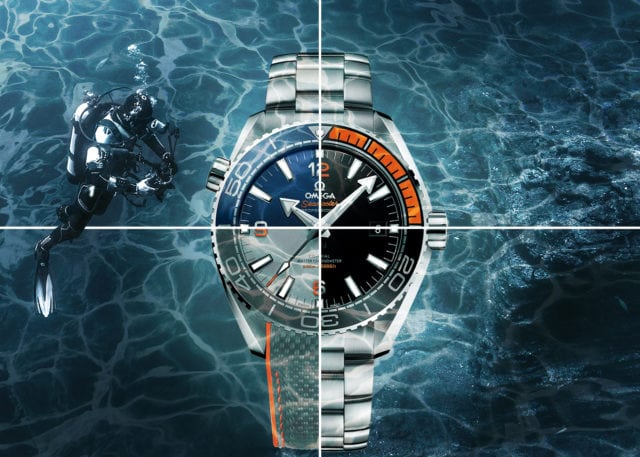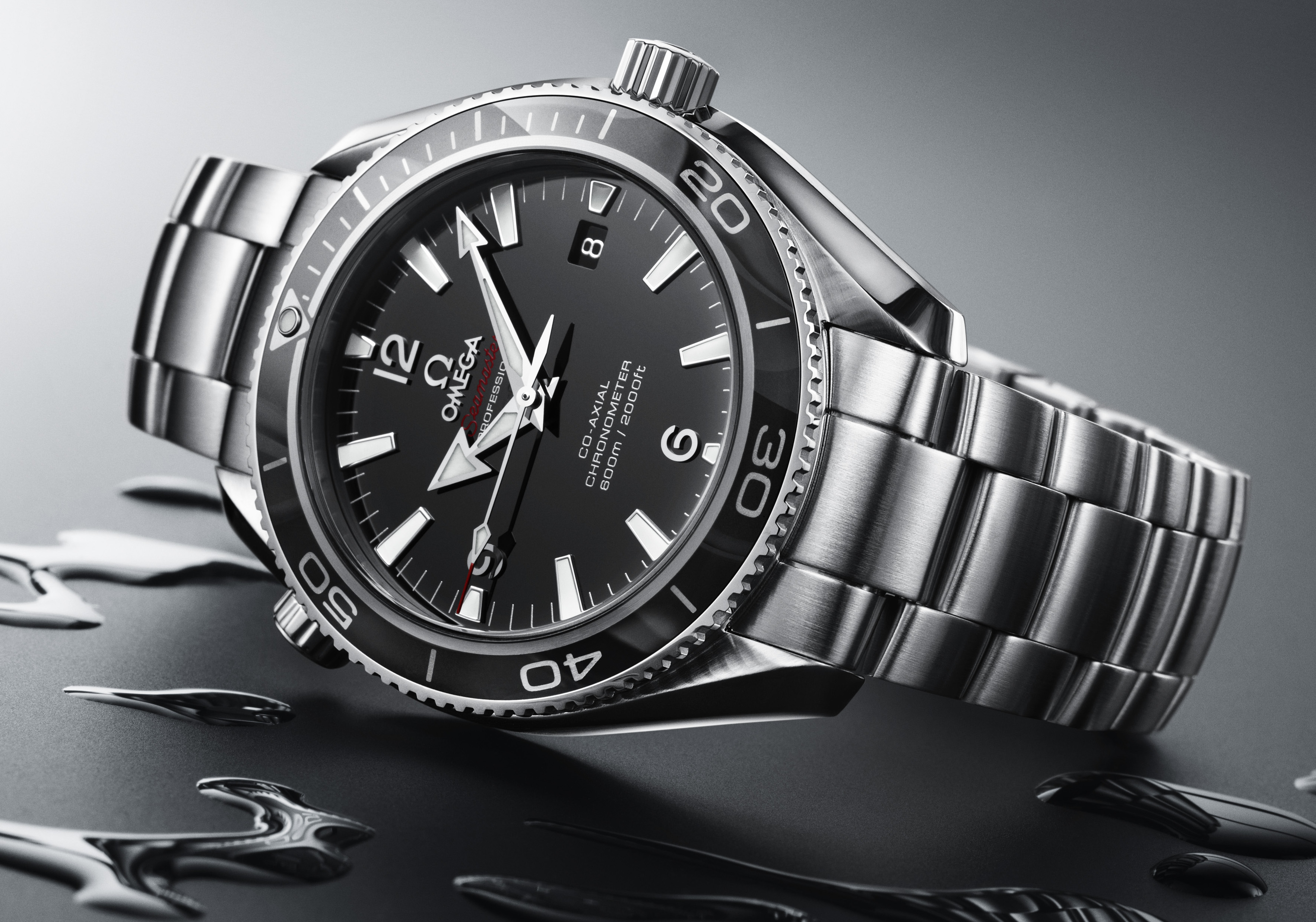
Planet Ocean Liquidmetal & The Transitional Phase (2009)
In 2009, Omega introduced Liquidmetal to the world by way of releasing the limited edition Omega Seamaster Planet Ocean ref. 222.30.42.20.01.001. Possibly the single most desired Planet Ocean, this is a transitional 42mm model that was limited to 1,948 pieces and while it debuted the Liquidmetal ceramic bezel, it ran on the outgoing caliber 2500 movement which kept the watch at 14.2mm-thick, which is slimmer than the later caliber 8500 Planet Ocean’s 15.7mm. On the dial you’ll notice the “Zr02” text, orange “Seamaster” text, and a glossy finish instead of the previous matte dial, all of which became design staples of future Planet Ocean watches.
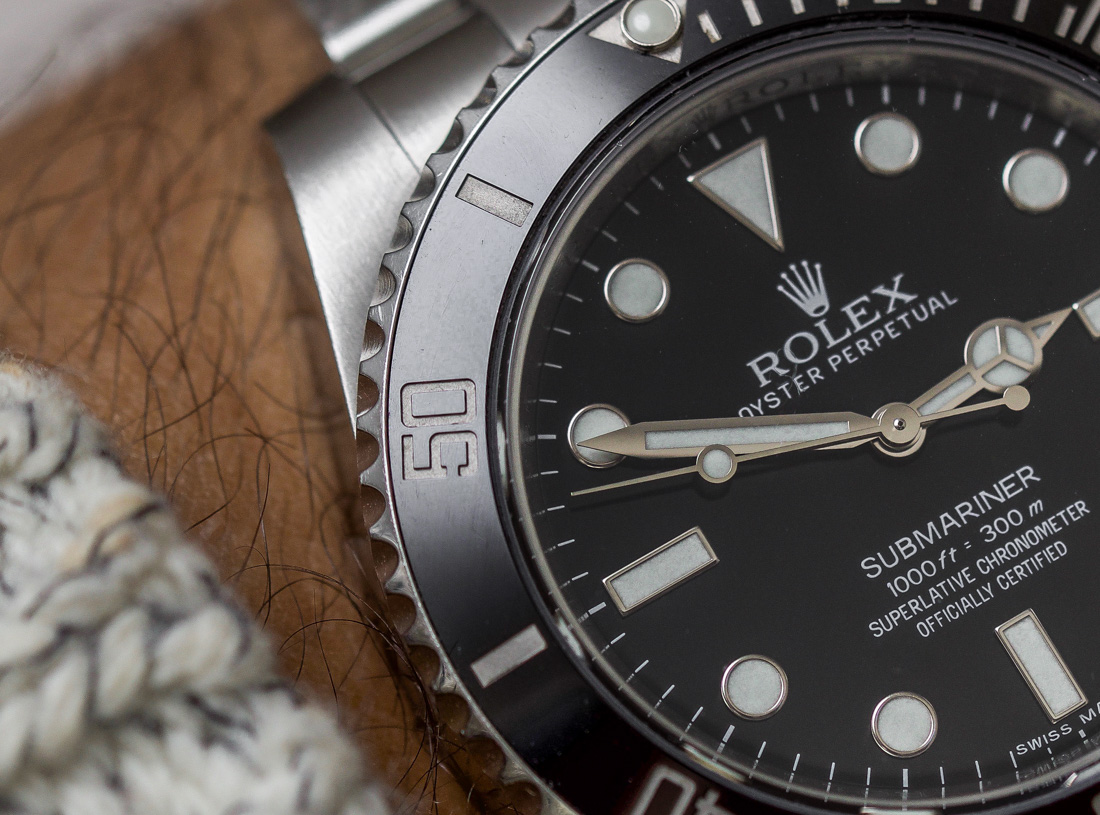
A lot has been said about the technique and development process of Liquidmetal, but I quickly want to explain its purpose. As a malleable protective alloy applied over the ceramic bezel, it not only strengthens the ceramic and prevents discoloration, but it also seeps into the engraved indices and numerals (see above image of a Rolex Submariner bezel demonstrating this). Above is an image of the bezel on a ceramic Rolex Submariner that saw a lot of, let’s say, “indelicate” use for several weeks and the accumulation of particles and dirt in the engraved parts of the bezel show clearly. Below that is an image of a Liquidmetal bezel on my Planet Ocean which totally avoids this. Having worn both pieces extensively, I really learned to appreciate the superiority of the Omega bezel due to this material.
It’s nothing new anymore, but Liquidmetal is quite simply a titanium alloy which is the result of a mixture of various metals including zirconium and nickel. Liquidmetal is very elastic and malleable so when it is used with ceramic (in this case on the Planet Ocean bezel) it results in a more durable and attractive bezel than would be produced by a simple ceramic bezel. Of course, Omega isn’t the first to have proprietary materials technology incorporated into bettering their ceramics. The most notable example here would be Rolex and their use of Cerachrom.
How is Liquidmetal utilized? Well, Omega starts with the ceramic base of the bezel which is created by making a ring of zirconium oxide and plastic, the latter of which is removed in the 1,000-degree baking process. The purpose of the plastic is to give the ceramic ring its distinctive color, which Omega was making in black, blue, and white for the Planet Ocean line at this point. (It would be a little longer until they could achieve other colors such as orange in a Liquidmetal ceramic bezel.) After this process, the ceramic bezel ring is fitted into the rotating bezel mechanism, cut, polished, and laser engraved with markers and numerals.
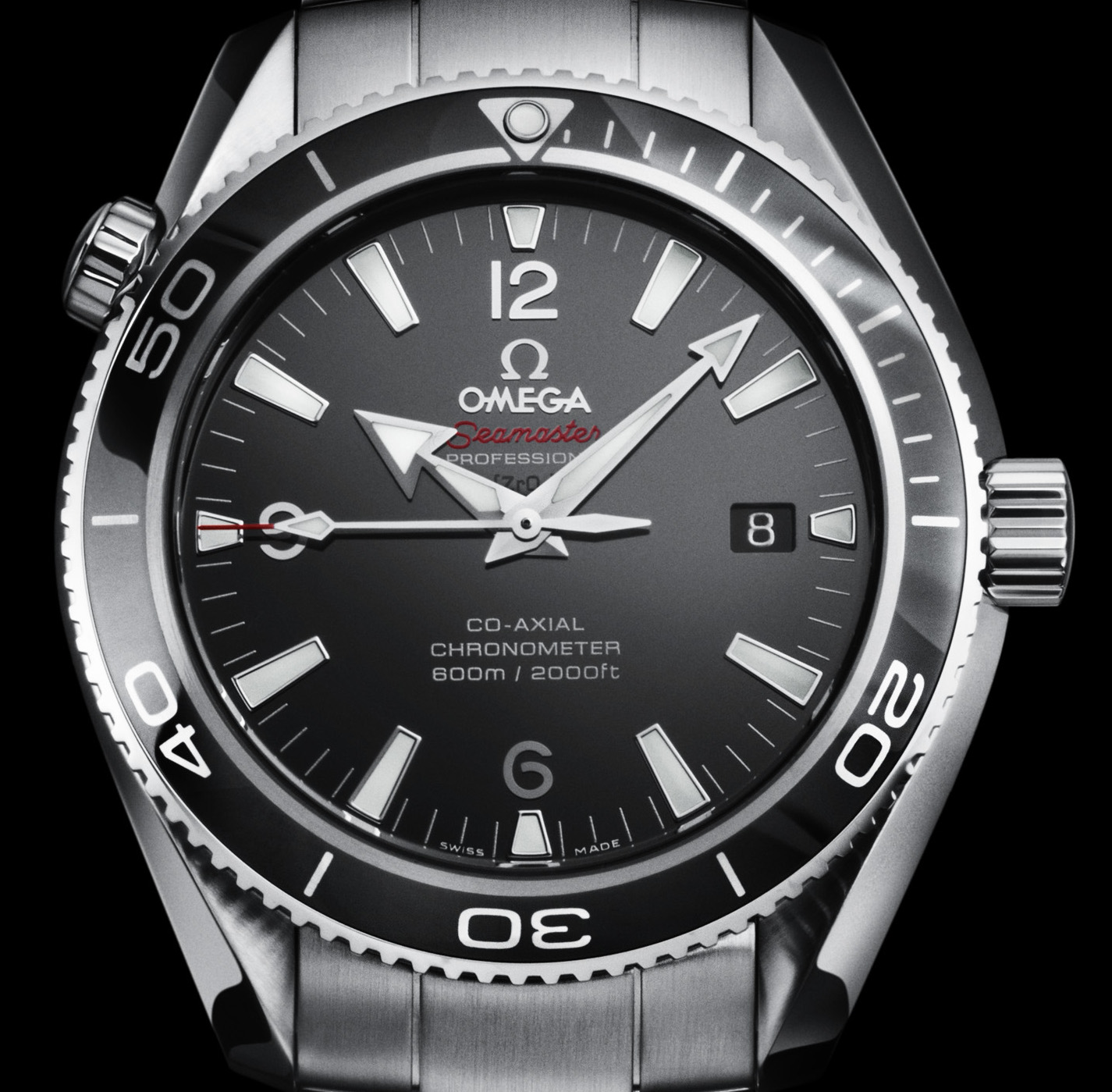
After this is when the Liquidmetal comes into play, with a thin ring of the material placed and compressed onto the ceramic bezel through a heating and pressure process. Next is the process I really want to see done in person one day. At this point, there is just an unrefined layer of melted Liquidmetal on the ceramic bezel which has also seeped its way into the laser-engravings. Because ceramic and Liquidmetal have different properties and melting temperatures, Omega can now polish off the excess Liquidmetal and have a beautifully finished bezel that is stronger, more corrosion resistant, and more resistant to color fading.
As for the Omega Seamaster Planet Ocean limited edition Liquidmetal watch, it asked for a serious $2,000 premium over the comparable existing 2201.50.00 with an asking price of $5,700. That might have seemed like a lot but from the few that come up for sale, you can now expect to pay between $8,800-$10,000. Again, I’d say this is likely the most desired Planet Ocean among collectors and enthusiasts.
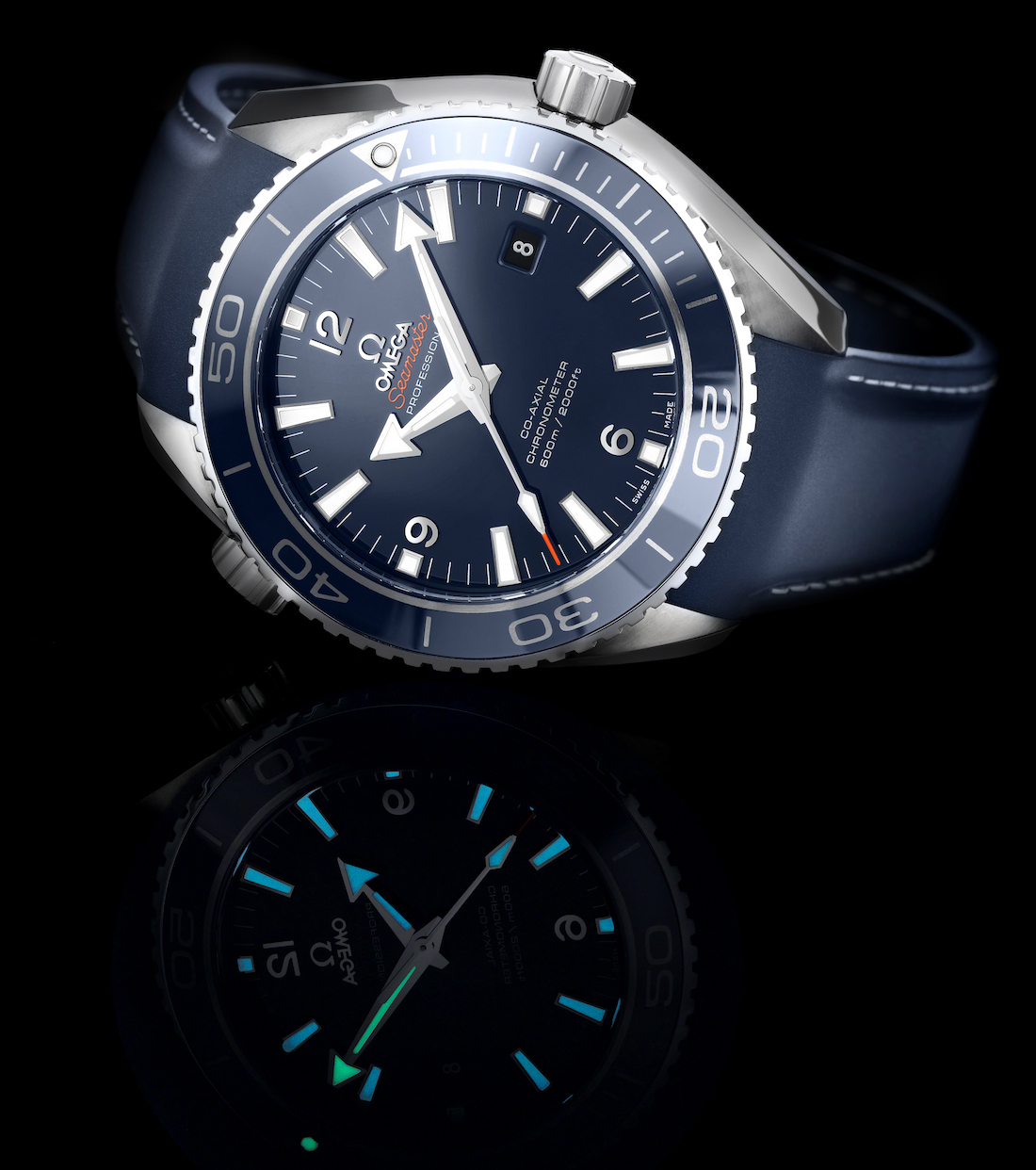
Omega Seamaster Planet Ocean Second Generation (2011)
It was six years after the debut of the Planet Ocean when we got the official revamped lineup of watches that made up the second generation of the top-tier dive watch. The biggest change, of course, was the addition of the in-house Caliber 8500 which replaced the outgoing generation’s ETA-based caliber 2500. The newer watches outfitted with the in-house caliber 8500 would gain the new distinction of being called “Co-Axial Chronometer” as well. Though the caliber 8500 had been around for a couple of years at this point, it was in the 2011 Planet Ocean that the movement adopted the use of a silicon hairspring. To briefly run down what else is new: a 37.5mm case joining the existing 42mm and 45.5mm cases; titanium case models; and the introduction of blue and white bezels and dials.
Planet Ocean Second Generation Design
There are a lot of noticeable aesthetic differences between the first and second generation Planet Oceans, one of the most obvious being the ceramic and Liquidmetal bezel I just previously discussed. You’ll also notice differences like more elaborate and larger applied indices, hour markers, and Omega logo. There’s also the orange font on the text reading “Seamaster” which I am a fan of but I know of several people who preferred the old white text.
If the design changes between the first and second generation had to be summed up in one way, it would be that Omega recognized that in order for the Planet Ocean line to compete with the Rolex Submariner (and that is what the Planet Ocean is, no matter what anyone says), they need to continuously improve, upgrade, and update this model. The second generation was a transitional period for Omega, with some models beginning to adopt traits like a glossy dial and ceramic Liquidmetal bezel, which would soon become universal to the line.
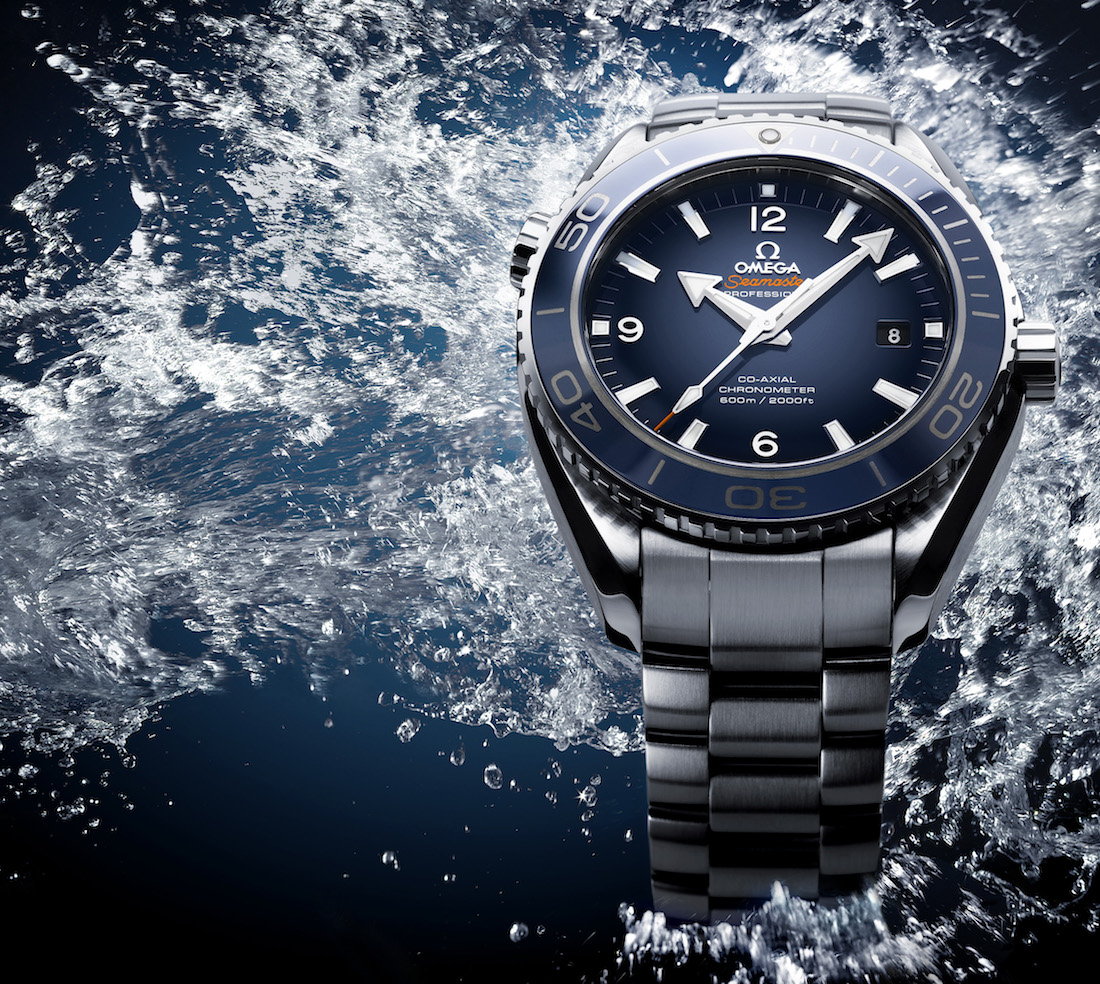
On the dials of the second generation, Omega added white-coated Super-LumiNova to the applied indices as well as the hour and seconds hands, all of which would emit a blue light in contrast to the minute hand and pip on the bezel, which would emit a green light. Where the black dialed model kept a matte dial, the new titanium cased blue dial/bezel model introduced what would eventually be the universal Planet Ocean glossy dial. This is, quite understandably, a divisive decision since not everyone likes a glossy dial.
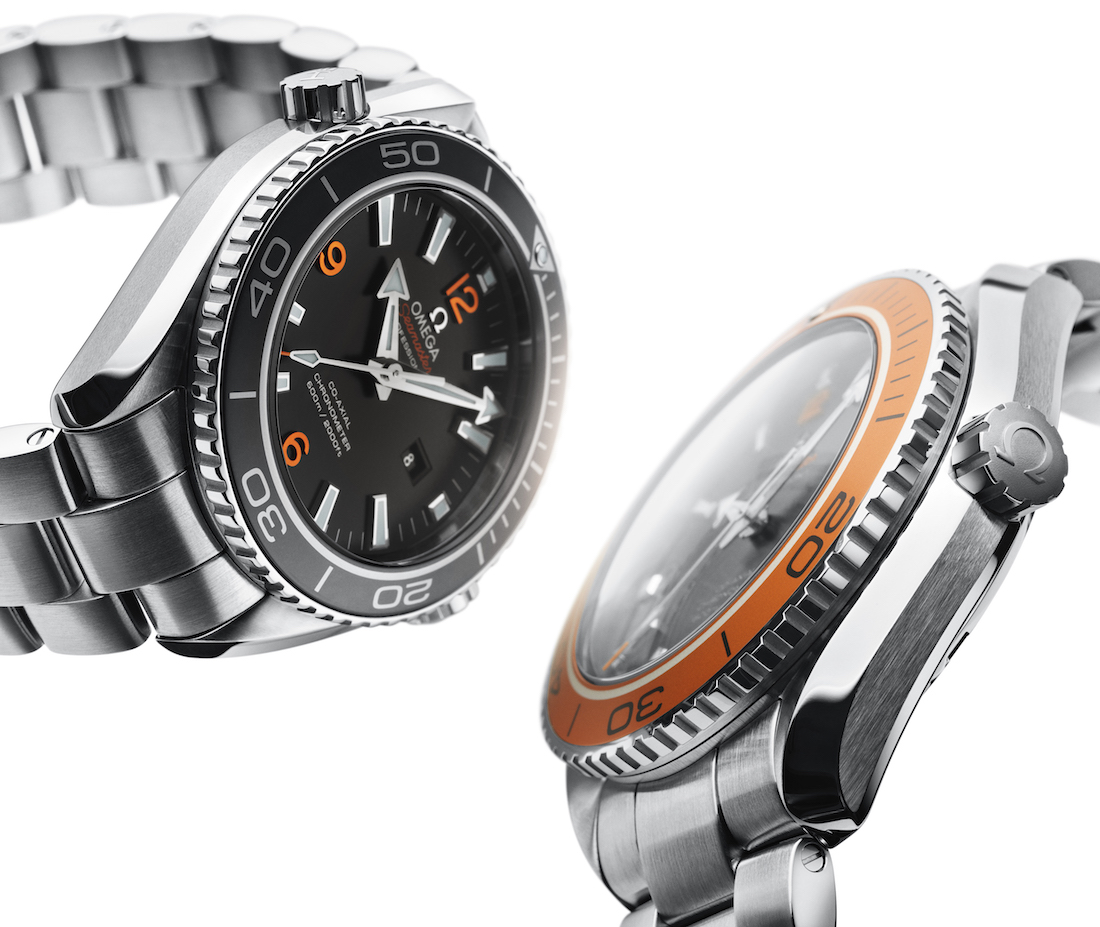
Planet Ocean Second Generation Case
As I previously mentioned, Omega introduced a new, smaller 37.5mm case which was marketed as a ladies’ watch in addition to the 42mm and 45.5mm case. Another case size isn’t the only thing the Planet Ocean gained, since the addition of the in-house caliber 8500 movement added thickness to the cases. The 37.5mm case is 15mm-thick; the 42mm case is 15.7mm-thick; and the 45.5mm case is 16.5mm-thick. To keep this in context, a modern Rolex Submariner ref. 116610 is just about 12.5mm thick. Side by side, it’s a considerable difference and it should be clear by now that the Planet Ocean has never been a watch for people who don’t like, or at least can’t tolerate, a thick case.
A major change to the Planet Ocean was the addition of an exhibition caseback, replacing the old engraved steel casebacks that featured the Hippocampus. Anyone familiar with dive watches understands that when it comes to water resistance, having an exhibition caseback will always make things harder. Of course, with more and more competing luxury watch brands featuring exhibition casebacks (with one notable exception being Rolex, which has never made a watch with an exhibition caseback), Omega quickly adopted these across the line which was made possible at least in part by the anti-magnetic properties of the caliber 8500 movement. Again, there are trade-offs to having both an exhibition caseback and the in-house caliber 8500, with one of the biggest being that thick Planet Ocean case.
A noteworthy addition in the second generation was offering the watches in a grade 5 titanium case. Titanium options range from just the case with a watch on rubber or a leather strap to a titanium case on a titanium bracelet, though Omega has kept this lightweight metal option to their blue dial/blue bezel three-hand models, GMT, and chronographs. This changed in 2016 when they also added a grey dial/grey bezel version.
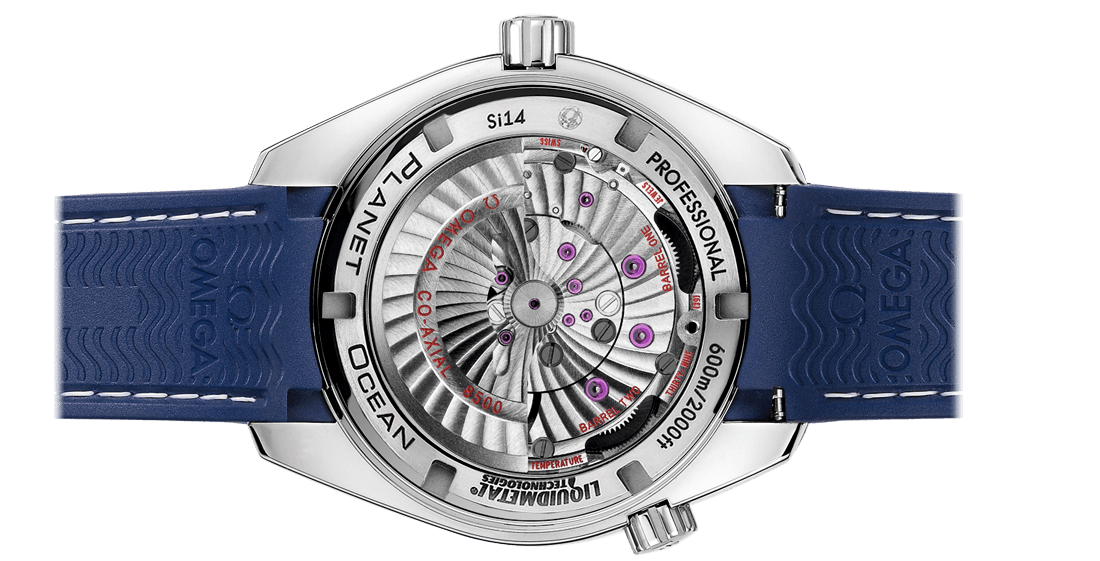
Omega Seamaster Planet Ocean + Caliber 8500 Movement
Of course, we can’t talk about the Planet Ocean’s second-generation without going into the then-new in-house assembled caliber 8500 movement. While still sourcing some ETA parts (it is a Swatch Group brand, after all), the 8500 was a big upgrade from the Caliber 2500 in both finishing and components. In addition to the highly advertised and lauded silicon escapement and hairspring, the escapement in the 8500 also uses two mainsprings which allow for a longer power reserve of 60 hours. It also was outfitted with DLC-coated barrel arbors, which reduce friction and wear. Finally, the balance bridge was upgraded to having two arms. Of course, there is the new rotor outfitted on the 8500 which is both more attractive and has the benefit of harnessing energy when moving in either direction.
Beyond the specific improvements in material and design, a more holistic view of the caliber 8500 shows a movement that is designed around the co-axial escapement whereas the 2500 was developed in a way that would allow the Co-Axial escapement to fit in the same place an ordinary escapement would be. It’s also a much, much better-looking movement than the caliber 2500 with more refined finishing, and Geneva waves throughout. Needless to say, an exhibition caseback would not have done any favors for a watch using a movement that looks like the 2500.
One thing that can’t be overstated in terms of improvement in functionality is that the Caliber 8500 allows for an independent hour hand, making setting the time and date very easy to do.

Introducing the Omega Seamaster Planet Ocean GMT
Introduced in 2013, the Planet Ocean GMT was and is one of my favorite iterations of the line. Presented as a clearly high-end capable diver with a useful GMT function (notably with an independently adjusted hour hand) for travelers, Omega also introduced a new 43.5mm case size for this Planet Ocean watch. Omega has never held back on different variations, colorways, or styles of their watches and the addition of a GMT to the Planet Ocean line was a natural fit.
While it’s easy to compare almost any Omega to a corresponding Rolex watch, it’s hard to not see the Planet Ocean GMT as a legitimate alternative to the Rolex GMT Master II – but the two are unique enough in their personalities to exist within the same watch collection. Whereas if someone had a three-hand Planet Ocean and a black Submariner, I’d be compelled to ask “why?” That being said, I have a Planet Ocean in my collection and my next watch acquisition is likely to be a green “Hulk” Submariner, which has its own identity.
Fortunately, the Planet Ocean GMT faithfully built on the successful design language of the second generation line. Only available in the new 43.5mm case, Omega added an orange-tipped GMT hand and 24-hour markers on the bidirectional bezel (of note, these PO GMT ceramic bezels didn’t utilize Liquidmetal). Sure, having a rotating bezel on a GMT watch is a little confusing but if you want to wear a luxury dive watch with a GMT function, then that logic has already gone out the window. Considering sales of the PO GMT, there have been more than enough people who don’t care about this. Also, to give Omega a little credit here, they removed the word “Professional” from the dial and replaced it with GMT as it lacks the 60-minute timing bezel.
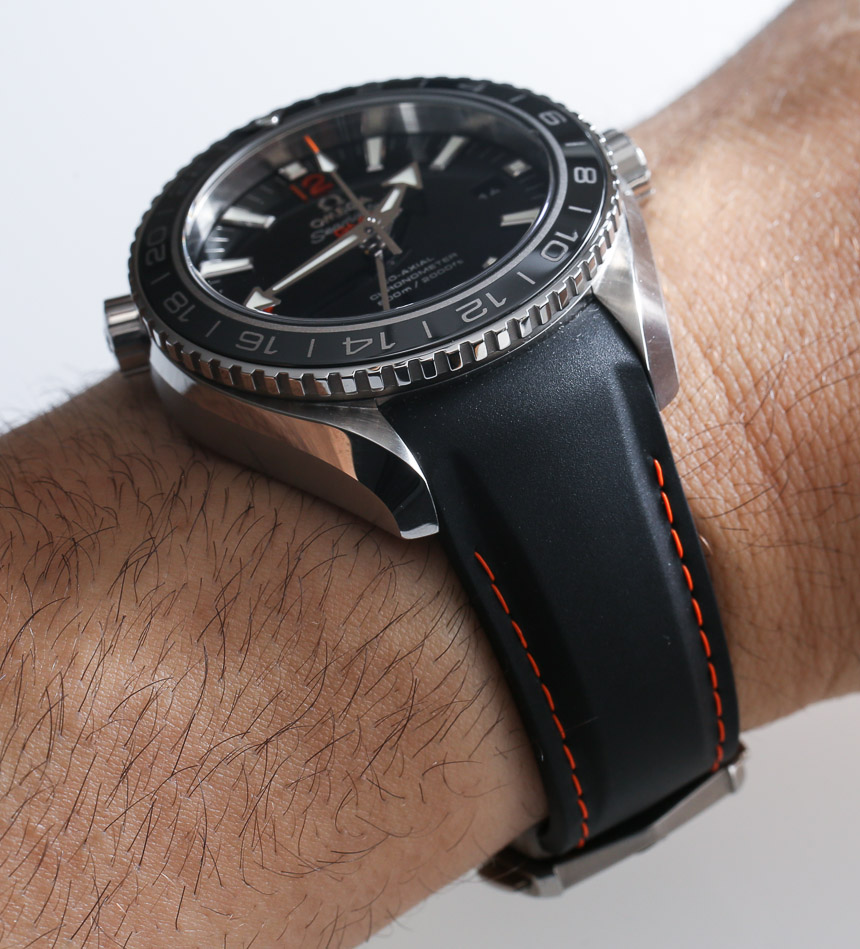
Of course, we now have to get back to that persistent topic of thickness, as the GMT clocks in at around 17.25mm-thick. The Rolex GMT Master II is significantly slimmer at 12mm. Of course, thickness isn’t judged in a vacuum. The Rolex is water-resistant to 100m and still has a steel caseback housing the caliber 3186 movement that has a 48-hour power reserve. The Planet Ocean GMT is water-resistant to 600m with an exhibition caseback which shows off the caliber 8605 movement (a caliber 8500 adapted to have the GMT function) that achieves a 60-hour power reserve. So, that extra bit of heft in thickness is understandably justified. When introduced, the Planet Ocean GMT was priced at $7,800.
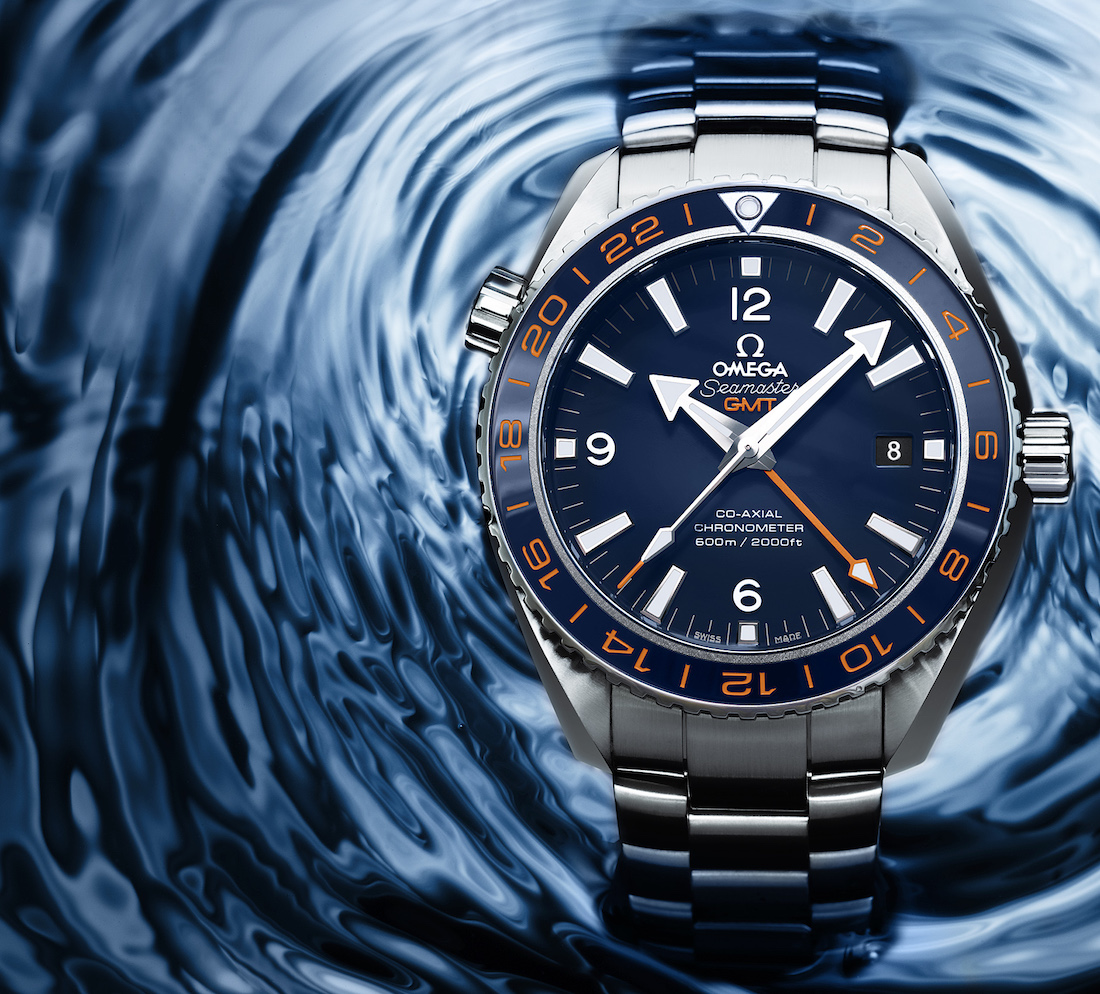
The GoodPlanet Foundation & Planet Ocean GMT
In 2011 Omega partnered up with the GoodPlanet Foundation, an organization dedicated to raising environmental awareness founded by photographer and journalist Yann Arthus-Bertrand. A year later, the two groups presented a documentary aptly called Planet Ocean, which was actually a majestic exploration of the oceans as well as the creatures that inhabit it, from minuscule to some of the largest on earth.
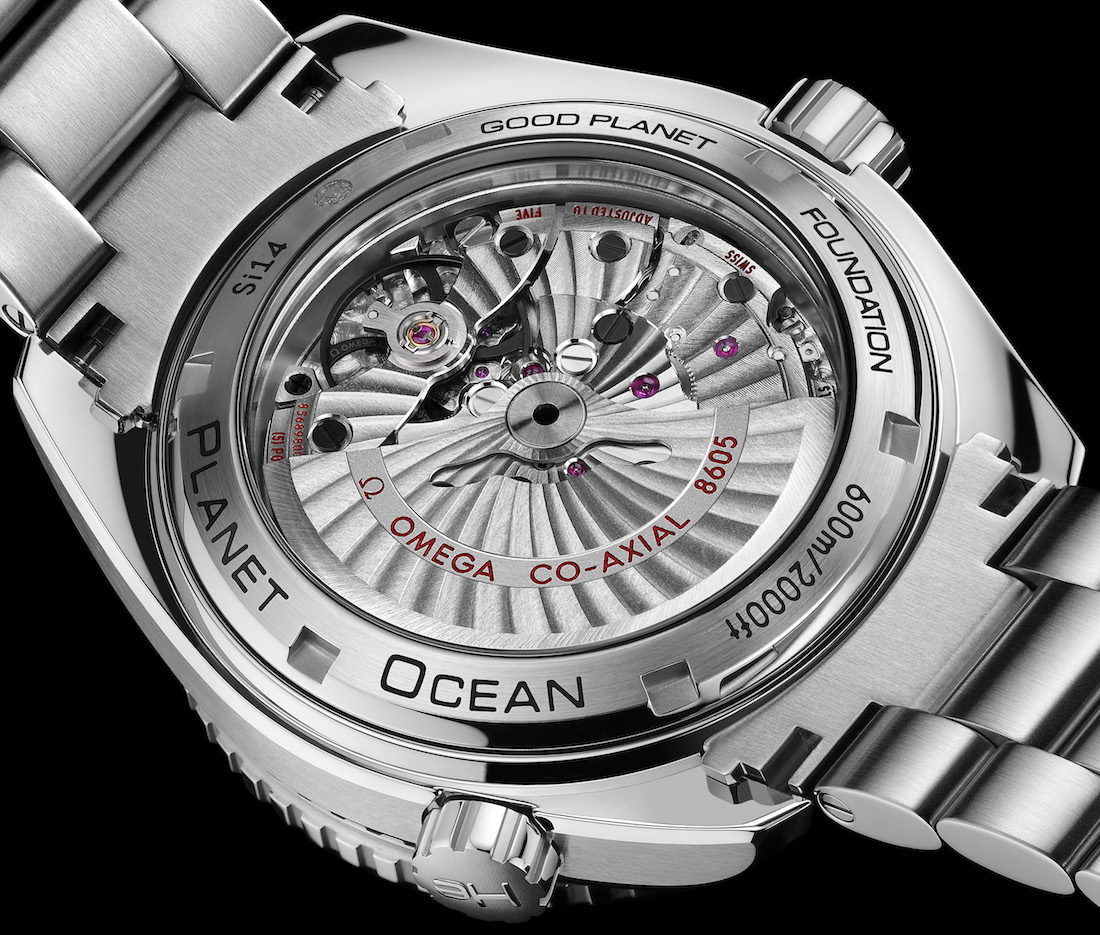
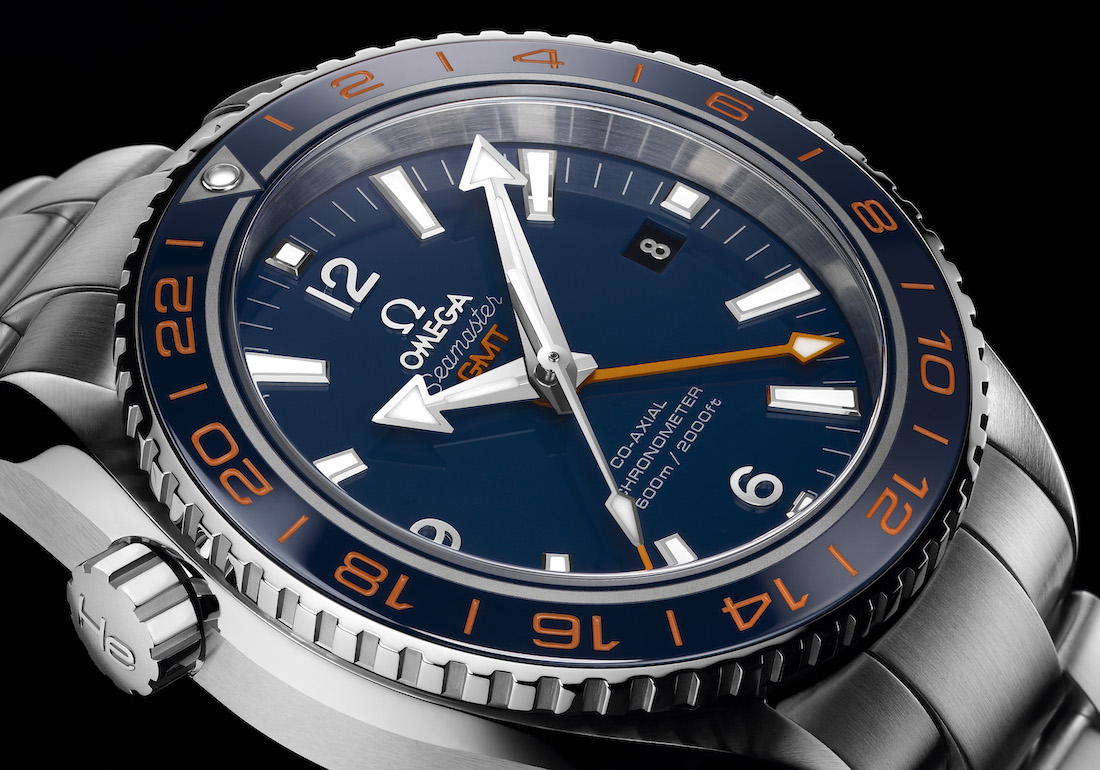
In 2013, the Omega and GoodPlanet foundation collaboration also resulted in what is my favorite of the first group of Planet Ocean GMT watches. Like with most successful collaboration projects, the GoodPlanet model only subtly tweaks the existing watch. Most similar to the blue dial/blue bezel Planet Ocean GMT, the GoodPlanet version has the bezel hour markers done in orange as well as the GMT hand in full orange. This watch is still available as are all the 43.5mm GMT models, though they are certainly starting to feel a little dated as the non-METAS certified caliber 8605 movement is overshadowed by the METAS certified caliber 8906 introduced in 2016. The Planet Ocean GMT GoodPlanet comes only in steel on a bracelet or on a rubber strap, priced at $8,100 and $8,000 respectively.
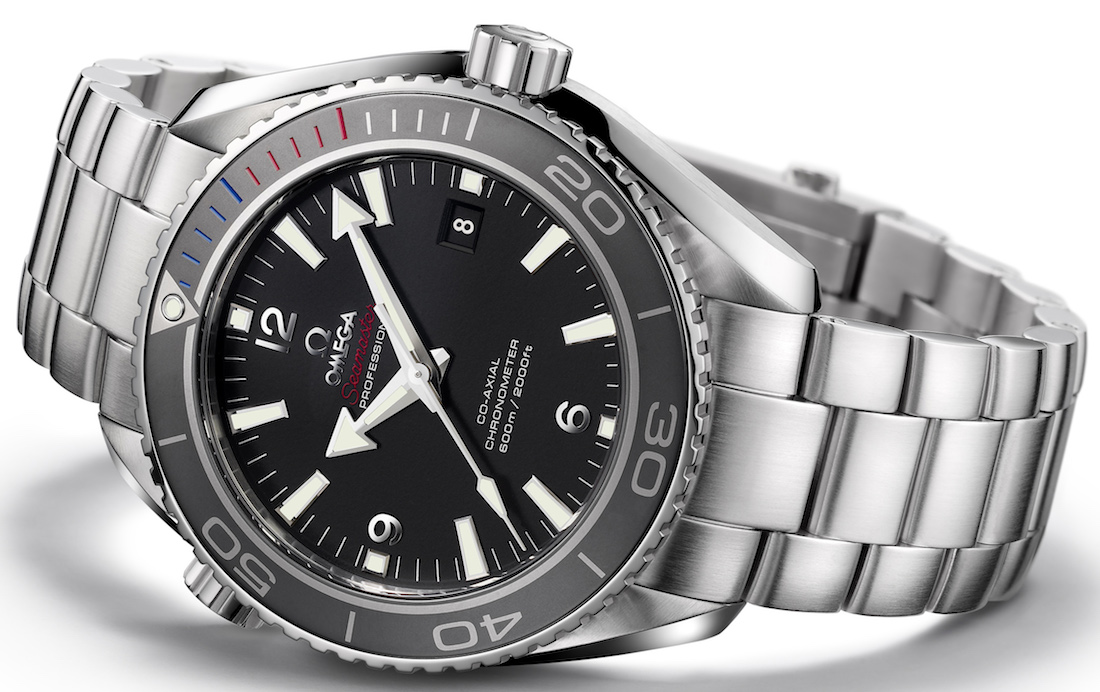
2014 Sochi Winter Olympics
Omega has a history with the Olympics (which we’ve covered in detail here) but 2014 saw the first Planet Ocean to commemorate the event, with the Planet Ocean Sochi 2014 limited edition watch. There were actually two versions, a 45.5mm men’s model on a bracelet and a 37.5mm ladies model on a leather strap.
The 45.5mm shares the same basic features as the non-limited edition version with some tweaks. You’ll notice the first ten minutes on the bezel are done in blue and red with the last five left a silverish white, which are the national colors of the Russian flag. Turning over the watch you’ll see that the exhibition caseback showing off the caliber 8500 is replaced with a steel caseback with the engraved Sochi 2014 logo. Of course, 2,014 of these watches were made and retailed for $6,600. These aren’t too difficult to find via Chrono24 and I see almost a dozen for sale between $4,500-$5,000.
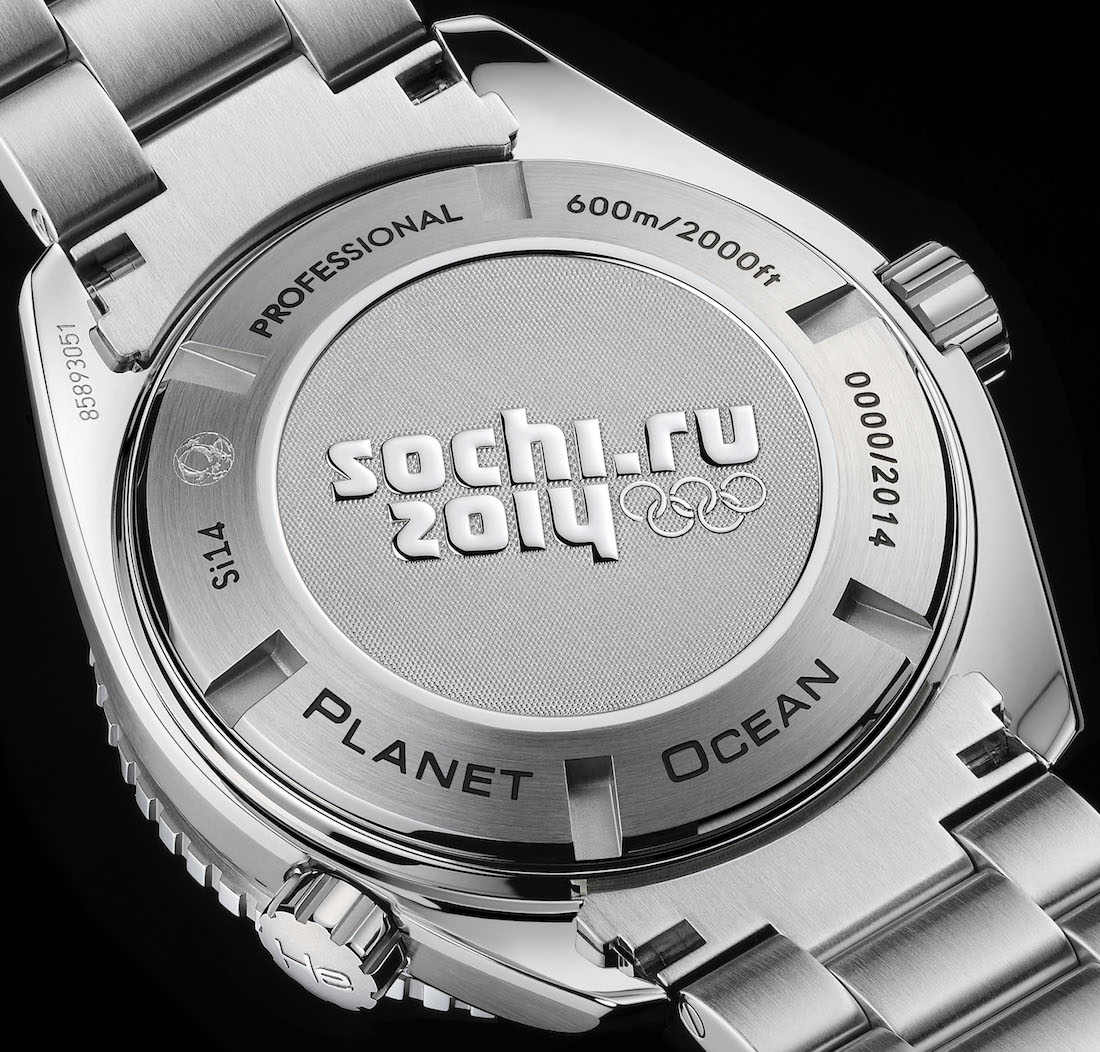
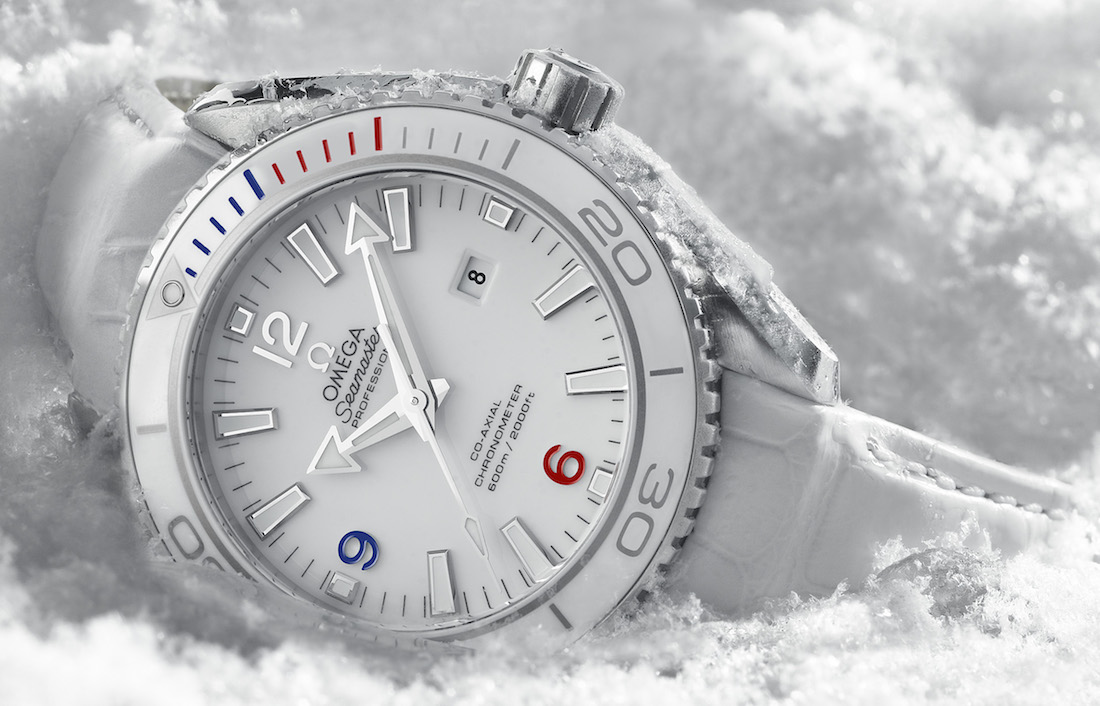
The 37.5mm ladies’ model comes on a white dial and bezel, with a white leather bracelet. Again, the 15-minute markers on the bezel are done in blue and red increments, but the 6 and 9 o’clock numerals are also done in red and blue, respectively. I like that the white dialed versions continue to have a matching date window which, as I don’t need to tell many of you, is a small detail that can go a long way. As this is a smaller model, it runs on the caliber 8520; though this version also has the closed steel caseback. These models were also made in a run of 2,014 pieces and had a price of $6,300. I’m sure both of these models are probably circulating around somewhere in Russia, and I see only one for sale (from Poland, though) for $4,500.
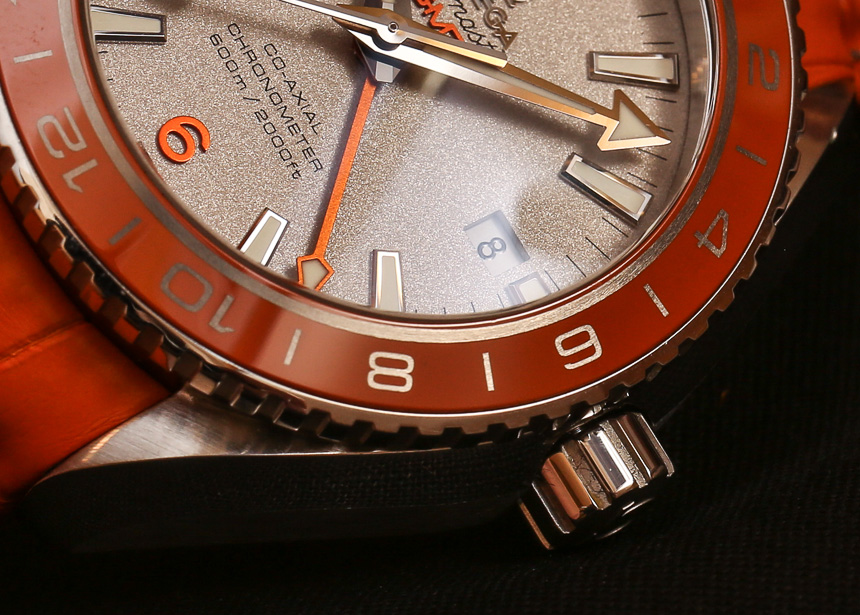
Orange Is The New Bezel
Something of a Planet Ocean milestone was reached in 2014, a year after the PO GMT was introduced. For some context, all the PO models with the orange bezels you’d see until this point were aluminum and not ceramic since getting the color done properly in the material wasn’t possible. Just as with 2009’s limited edition Liquidmetal debut Seamaster Planet Ocean ref. 222.30.42.20.01.001, the platinum Planet Ocean GMT Orange Ceramic had the words “World Premiere” on the caseback. The orange ceramic bezel wasn’t the only new development Omega debuted, but this watch also used platinum Liquidmetal.
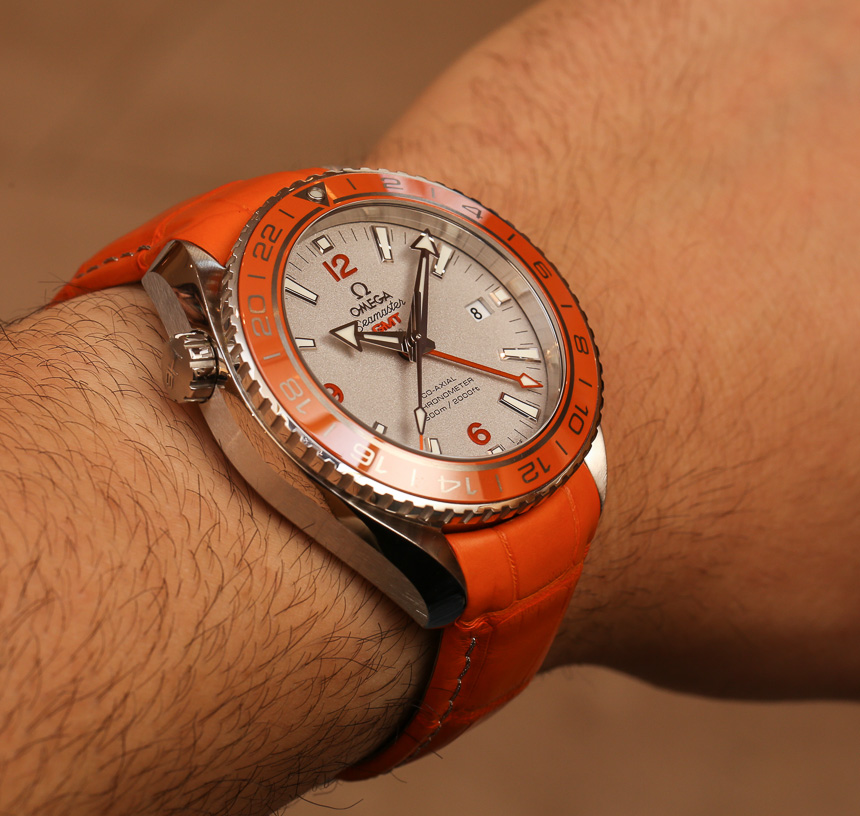
Again, Omega chose the Planet Ocean line to introduce significant development in materials technology. Where the limited edition transitional Liquidmetal model is one of the most in demand Planet Oceans, this reference 232.93.44.22.99.001 platinum orange ceramic bezel version is the most exclusive. Omega made only 8 of them at a price of $75,000.

